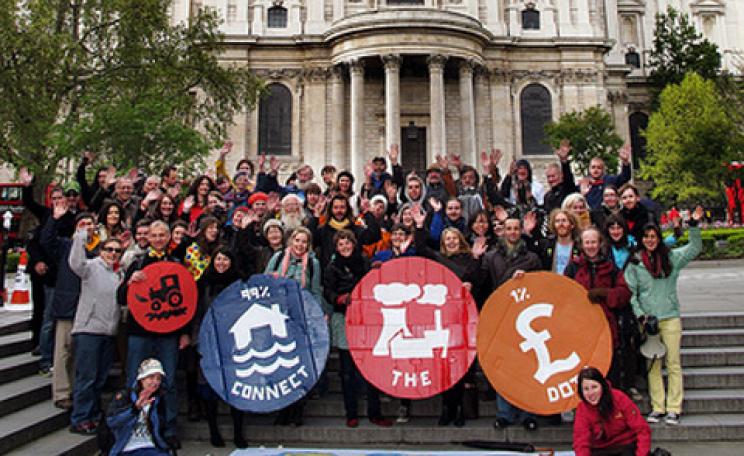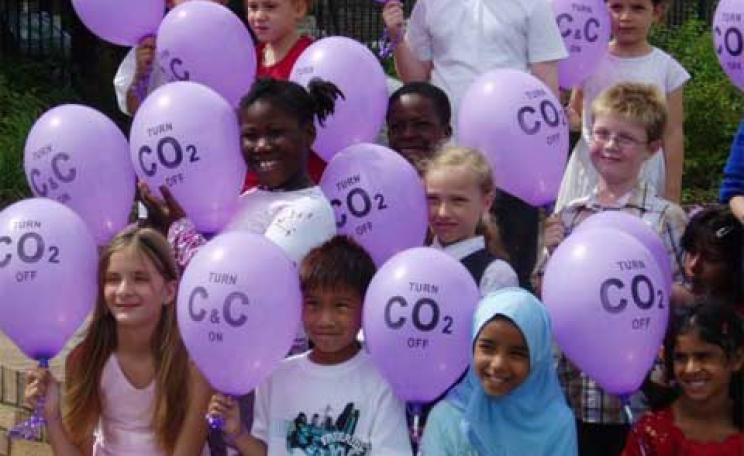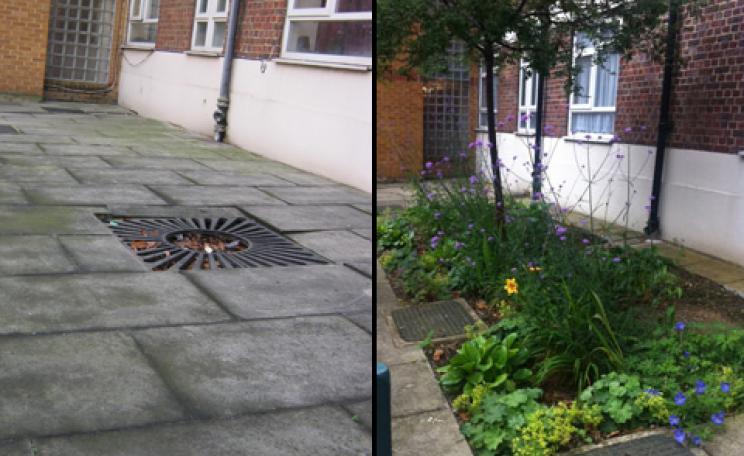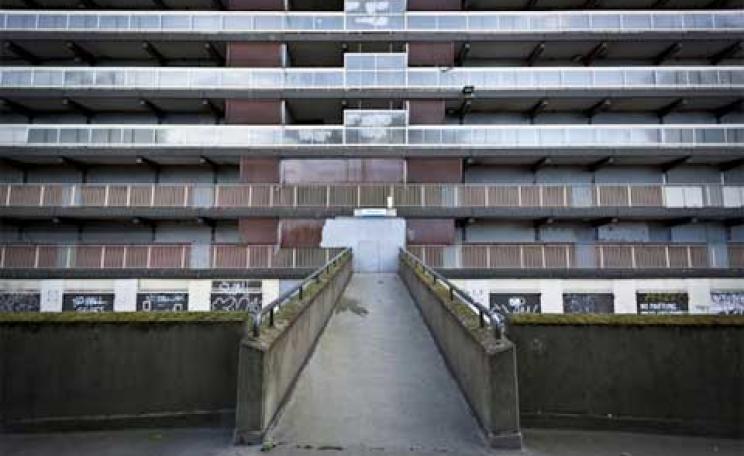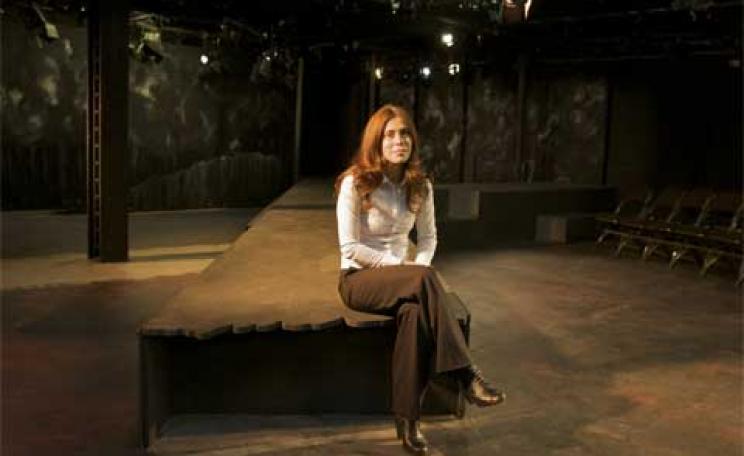We all know that turning off lights and insulating our homes saves energy and money. So why are so many people still not taking all the advice that's available?
Working in partnership with London Sustainability Exchange, Richmond Environment Network (REN), together with the Ham United Group (HUG), is pioneering an ambitious approach to behaviour change in previously hard-to-reach groups using the power of community-based social marketing.
The initiative, part of the London Councils funded 'Energise London' programme, is working with 'Street Champions' to reduce energy and water use in homes in Ham and Petersham, southwest London, while increasing renewable energy usage in the borough. Using networks of friends, neighbours and acquaintances, the community-based social marketing (CBSM) model works on the basis that behaviour is better influenced on a peer-to-peer level than by advice from external bodies.
REN's manager, Colin Cooper, says: 'Social marketing has a much higher uptake compared to traditional marketing. In other words, people will listen to their peers rather than an information campaign from someone they don't know. We are making energy-saving a social norm rather than something that is seen as different.'
Model behaviour
The CBSM model is summed up well in Doug McKenzie-Mohr's book, Fostering Sustainable Behaviour: An Introduction to Community-Based Social Marketing. Many current energy-saving campaigns use marketing tools to promote behaviour change. The trouble, according to McKenzie-Mohr, is that changing behaviour isn't as simple as picking up a different product at the shops, which involves little effort or cost; it is about creating a new behaviour rather than altering an existing one.
Often the barriers to behaviour change are manifold, and differ acccording to the person and the activity in question. People may avoid recycling, for example, for different reasons to those cited by people who won't take up cycling. A catch-all campaign will raise awareness, but when people return home, those ideas are often forgotten.
REN and HUG's paid project co-ordinator will manage as many as 80 volunteer 'street champions', recruited using adverts in local publications and peer-to-peer networking. The aim is to have roughly one champion per street. They are hoping to reach those with carbon footprints above the borough average, those suffering fuel poverty and those on lower incomes.
Volunteers are trained in how to install energy-efficiency measures such as draught excluders and hot water tank insulation jackets, then hold informal workshops and practical sessions with their personal networks and neighbours, teaching them how to do the same in their own homes. The benefit is that many homes in a street will be of the same build, which means neighbours will face the same challenges.
Low-carbon zones
The project has an ambitious target of signing 1,000 residents up to the scheme, with 1,000 voluntary pledges for reducing energy consumption.
The Street Champions scheme is part of the wider Low Carbon Zone initiative (one of 10 in London and of a growing number across the UK) aiming to cut carbon emissions by 20.12 per cent by 2012, and is also supported by Richmond council.
The first 620 homes will be funded by the Low Carbon Zone; after that REN may consider bulk-buying the energy-saving measures if funding is available.
Every home signing up to Ham and Petersham's Low Carbon Zone receives £150 worth of free energy and water-saving devices, such as hot water tank jackets, draught excluders and low-flow showerheads.
It is a key point that smaller improvements are made before more costly ones. Colin Cooper refers to the growth of solar panels as 'eco-bling', adding: 'There's little point spending money on solar panels if all the energy you generate is escaping through the doors.'
Project co-ordinator Chas Warlow says: 'By starting small and tackling the easy problems first, we hope to help people make some savings immediately, while creating a warmer, greener and more comfortable place to live.'
Extra funding has been made available via the Low Carbon Zone for low-cost loans for further home improvements, such as cavity wall insulation, and street champions are able to provide advice on this. As legislation is often instrumental in helping people achieve energy-saving measures, they will also provide feedback to the local council on barriers to behavioural change.
In order to measure changes in energy use, electricity and gas bills are gathered for the 12-month period prior to the study. In addition, energy assessors will visit homes and provide thermal images of the properties to show where heat is being lost. British Gas engineers will carry out an energy audit on each house to see where the greatest savings could be made.
A positive start
One reason why future Low Carbon Zones may view this one with interest is the fact that Ham and Petersham, with its 3,500 homes and 6,000 residents, has such a diverse demographic, with ‘sink estates' sitting nose-to-nose with multimillion-pound properties.
In three months, 25 street champions have been recruited, and Colin says he feels positive about the project so far. He advocates the importance of remaining flexible, however, and learning from mistakes and successes throughout the programme (based on the organisational learning model). Citing similar schemes that have sought to generate community involvement and failed, he suggests that a simple message focusing on one aspect of life is likely to have the greatest success.
Energy efficiency at home is one where traditional marketing campaigns have made very few inroads: the UK's housing stock is far from efficient and is still responsible for 26 per cent of the UK's CO2 emissions.
One leading brand and mass behaviour thinker, Mark Earls, suggests in his book Herd: How to Change Mass Behaviour by Harnessing Our True Nature that most of our behaviour is a result of our interaction with others, and that by tapping into this resource we are much more likely to change behaviour than with conventional advertising.
The success of Modbury, the first town in Europe to go plastic-bag-free, is one example of how community ownership can reap real, long-term benefits.
Colin adds: 'I hope through this project people can expect environmental benefits and savings on their energy bills in a future where energy prices will only increase. They will live in warm, more efficient homes, with the added social benefits of developing personal relationships with their neighbours where they may not have known their names before.'
Useful links
Watch a video on the Street Champions project here
Institute for Social Marketing
National Social Marketing Centre
London Sustainability Exchange
Energise London
Laura Laker is a freelance journalist
| READ MORE... | |
 |
HOW TO MAKE A DIFFERENCE Is social marketing our last chance to change people? Worldwatch's influential State of the World 2010 report tells us why we need more stories addressing climate change and fewer shocking facts |
 |
INTERVIEW Erik Assadourian: our society needs some serious cultural engineering The editor of the influential Worldwatch 'State of the World' report on the best ways to transform cultures from consumerism to sustainability |
 |
HOW TO MAKE A DIFFERENCE How to campaign for less waste and more recycling From plastic bag-free towns to refashioned clothes and bus fleets run on chip fat, here's a guide to what you can do to tackle waste in your community |
 |
INTERVIEW LSE's Anne Power: my recipe for 80 per cent energy savings in your home Anne Power, Professor of Social Policy Housing and Social Exclusion at the London School of Economics, on why nearly all homeowners can afford to insulate properly, and how to save energy on a budget |
 |
SPECIAL CONTENT Ecologist guide to greening your home Greening your home can save you energy and money as well as making it healthier and lowering its carbon footprint |



